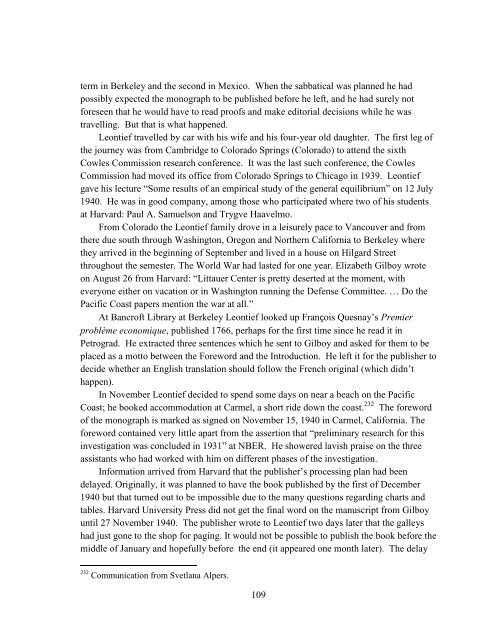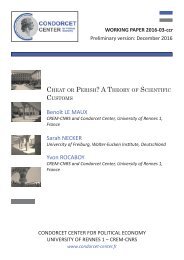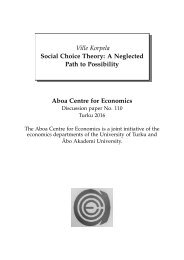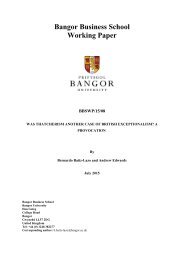MEMORANDUM
n?u=RePEc:hhs:osloec:2016_018&r=hpe
n?u=RePEc:hhs:osloec:2016_018&r=hpe
You also want an ePaper? Increase the reach of your titles
YUMPU automatically turns print PDFs into web optimized ePapers that Google loves.
term in Berkeley and the second in Mexico. When the sabbatical was planned he had<br />
possibly expected the monograph to be published before he left, and he had surely not<br />
foreseen that he would have to read proofs and make editorial decisions while he was<br />
travelling. But that is what happened.<br />
Leontief travelled by car with his wife and his four-year old daughter. The first leg of<br />
the journey was from Cambridge to Colorado Springs (Colorado) to attend the sixth<br />
Cowles Commission research conference. It was the last such conference, the Cowles<br />
Commission had moved its office from Colorado Springs to Chicago in 1939. Leontief<br />
gave his lecture “Some results of an empirical study of the general equilibrium” on 12 July<br />
1940. He was in good company, among those who participated where two of his students<br />
at Harvard: Paul A. Samuelson and Trygve Haavelmo.<br />
From Colorado the Leontief family drove in a leisurely pace to Vancouver and from<br />
there due south through Washington, Oregon and Northern California to Berkeley where<br />
they arrived in the beginning of September and lived in a house on Hilgard Street<br />
throughout the semester. The World War had lasted for one year. Elizabeth Gilboy wrote<br />
on August 26 from Harvard: “Littauer Center is pretty deserted at the moment, with<br />
everyone either on vacation or in Washington running the Defense Committee. … Do the<br />
Pacific Coast papers mention the war at all.”<br />
At Bancroft Library at Berkeley Leontief looked up François Quesnay’s Premier<br />
problème economique, published 1766, perhaps for the first time since he read it in<br />
Petrograd. He extracted three sentences which he sent to Gilboy and asked for them to be<br />
placed as a motto between the Foreword and the Introduction. He left it for the publisher to<br />
decide whether an English translation should follow the French original (which didn’t<br />
happen).<br />
In November Leontief decided to spend some days on near a beach on the Pacific<br />
Coast; he booked accommodation at Carmel, a short ride down the coast. 232 The foreword<br />
of the monograph is marked as signed on November 15, 1940 in Carmel, California. The<br />
foreword contained very little apart from the assertion that “preliminary research for this<br />
investigation was concluded in 1931” at NBER. He showered lavish praise on the three<br />
assistants who had worked with him on different phases of the investigation.<br />
Information arrived from Harvard that the publisher’s processing plan had been<br />
delayed. Originally, it was planned to have the book published by the first of December<br />
1940 but that turned out to be impossible due to the many questions regarding charts and<br />
tables. Harvard University Press did not get the final word on the manuscript from Gilboy<br />
until 27 November 1940. The publisher wrote to Leontief two days later that the galleys<br />
had just gone to the shop for paging. It would not be possible to publish the book before the<br />
middle of January and hopefully before the end (it appeared one month later). The delay<br />
232 Communication from Svetlana Alpers.<br />
109





